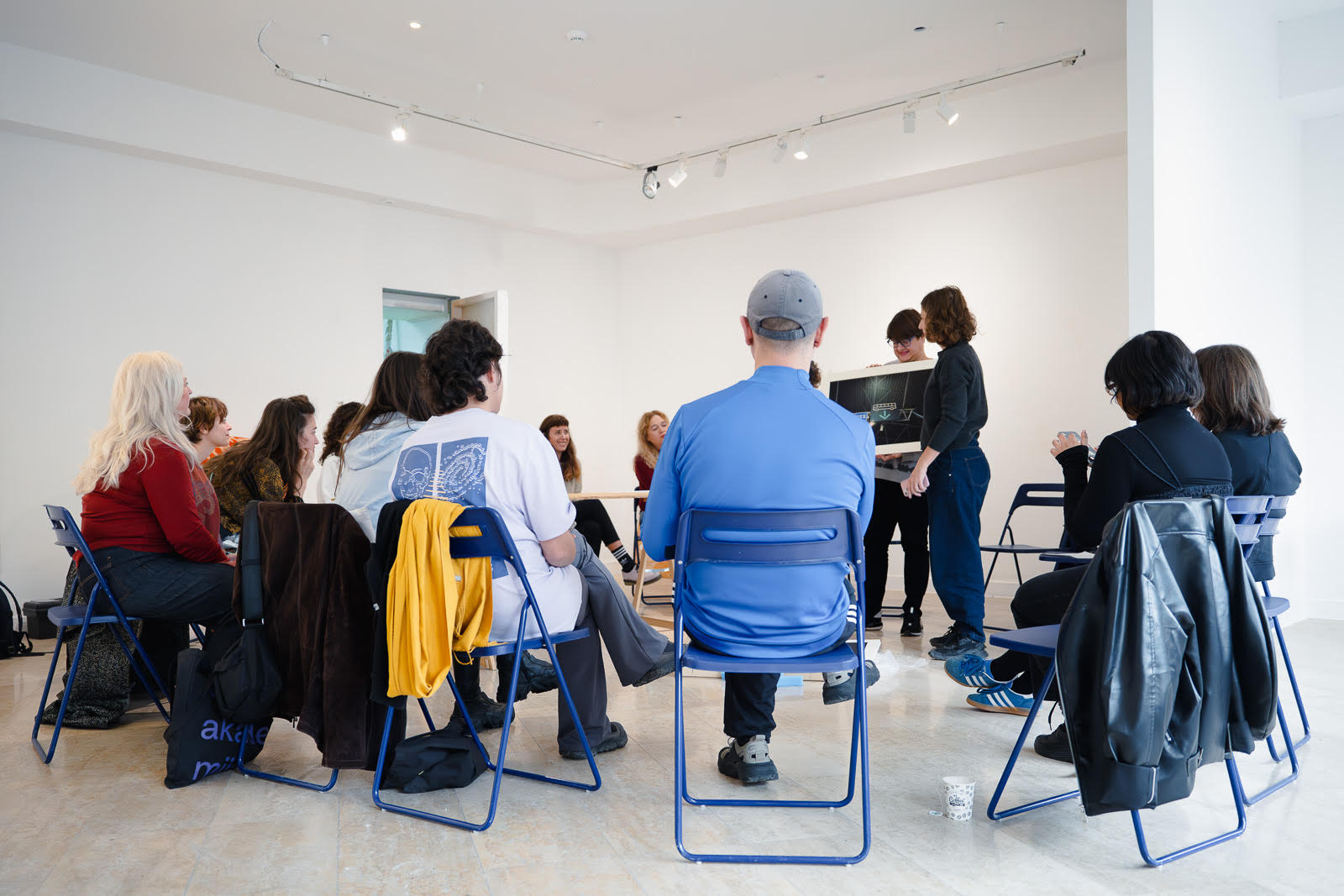Please, introduce yourself and your artistic practice. Where and when do you work/create?
I am Ghita Skali, an artist from Casablanca currently working in Amsterdam. As an initial impulse, my work takes investigations around anecdotes. For example, the construction of an Eiffel Tower in Fes (Morocco), the imprisonment of a spy duck in Cairo (Egypt), or the donkey tails of Rita McBride’s sculpture stolen by the inhabitants of Monchegladbach (Germany). These intrigues left only fleeting traces, but they reveal power relations based on mythologies, the reification of fiction and assumptions. I borrow, among others, the codes of the street interview, the conference, the documentary, the guided tour.

I spend a lot of time researching, meeting people, collecting anecdotes, discussing art. These interactions are necessary for the work and always here. From time to time, I lock myself in the studio to digest all that and throw some artworks.
What mode of education was the one that made an impact on you the most? (within or outside official institutions)

I am interested in a rhizomatic way of thinking and a free association of thoughts where information is not classified. It is an attempt to counterpoint a classic and linear way of telling the history from the point of view of the dominant. I love learning by mistake, to hear rumors when I am researching and to develop my knowledge inside a circle of people I consider allies.
How do you feel about collaborations and collectivity in the changed circumstances of limited possibilities of getting together?
I have always considered the collaborations and the collectivity as a powerful way to change dominant discourses inside the institution and as a necessity for a practice. My work is based on involving others, their thoughts, their interpretations. In the beginning of the pandemic, the Authority decided overnight to consider these interactions as frivolous and dangerous. If you did not have sociability based on a regular family system and involving a heteronormative set-up (family, children, parents), you were considered as a danger and asked to stay at your place alone. How do you adapt a practice based on getting together, on traveling, to the restrictions of the pandemic? It was and it is still difficult but it also showed the necessity to find tricks and alternatives to figure out how to still be together even in this context.
How do you see the issue of artistic productivity in times of the pandemic?

It is as if we are running in between two realities and two calendars. On one hand, it is as if everything is suspended. Everything is closed, and the global context is scary. On the other hand, many art institutions are working as if nothing is happening and they request works with specific deadlines. For me, it is a little bit hard to work with these two timelines. How can I produce art when it is so chaotic around me? How can I work for a show and produce a new piece when museums, cities, and countries are closed and we have no clue when they are going to open again?
Which art work(s) do you come back to or keep in mind?
I have recently seen the video Artworks made at home by Ahmet Ögüt. This essay is a collage of artists such as Ulay, Harun Farocki and Anri Sala in their domestic surroundings where they subvert the semiotics of everyday life. This video is really refreshing and helps to see the necessity of making art even in the politically loaded context of a global pandemic.



